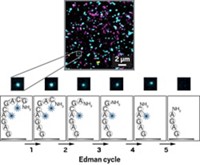Advertisement
Grab your lab coat. Let's get started
Welcome!
Welcome!
Create an account below to get 6 C&EN articles per month, receive newsletters and more - all free.
It seems this is your first time logging in online. Please enter the following information to continue.
As an ACS member you automatically get access to this site. All we need is few more details to create your reading experience.
Not you? Sign in with a different account.
Not you? Sign in with a different account.
ERROR 1
ERROR 1
ERROR 2
ERROR 2
ERROR 2
ERROR 2
ERROR 2
Password and Confirm password must match.
If you have an ACS member number, please enter it here so we can link this account to your membership. (optional)
ERROR 2
ACS values your privacy. By submitting your information, you are gaining access to C&EN and subscribing to our weekly newsletter. We use the information you provide to make your reading experience better, and we will never sell your data to third party members.
Analytical Chemistry
Tracking Wildlife With Chromatography
Bile acid profiles might give scientists a way to identify mountain lions
by Celia Henry Arnaud
August 22, 2007
The population of mountain lions, also known as cougars, in the eastern U.S. is thought to have fallen in recent years. To test whether the animals could be on the rebound, biologist Gary Heidt, chemist Ali U. Shaikh, and graduate student Jennifer Shirley at the University of Arkansas, Little Rock, are trying to develop chromatography and mass spectrometry methods to identify mountain lions by the bile acid profiles in their scat. Shaikh described their progress at a poster session organized by the Division of Analytical Chemistry at the American Chemical Society's national meeting being held this week in Boston.

Conservation biologists typically estimate mountain lion populations from the amount of mountain lion scat found in a particular region. People originally used the scat's size and shape, at best an extremely qualitative method, to determine whether it came from a mountain lion. Profiling the DNA present in scat is another option, but it's difficult to distinguish the predator's DNA from that of its prey. Heidt and Shaikh turned to bile acid profiles instead.
A variety of bile acids are produced by the liver and used by the intestines to aid in digestion by emulsifying food. The bile acid profile in an animal???s waste depends on the animal itself and the microbes in its gut. These complicated bile acid profiles might help distinguish mountain lions from other wildlife, Shaikh and his colleagues reasoned.
The team started with gas chromatography methods coupled with mass spectrometry. To make the bile acids amenable to GC analysis, the researchers derivatized the bile acids with trimethylsilyl or diazomethane. But these derivatization methods are time-consuming, and diazomethane is potentially explosive, so they turned to liquid chromatography paired with MS instead. The LC method allows them to separate bile acids that are not separated by the GC method. With this method, "we can really extract information about these bile acids even though they???re not very well resolved in the GC," Shaikh said. He and his colleagues are still developing the LC method to distinguish between some isomeric bile acids.
The scientists have not yet identified a bile acid unique to mountain lions that can serve as a marker. From the GC analysis, they had thought that glycocholic acid could be such a marker, but the LC analysis—with its better resolution and lower detection limits—revealed glycocholic acid in the bile acid profiles of other species. The researchers are continuing to search for an appropriate marker, Shaikh said. "There's a lot more work to be done.





Join the conversation
Contact the reporter
Submit a Letter to the Editor for publication
Engage with us on Twitter